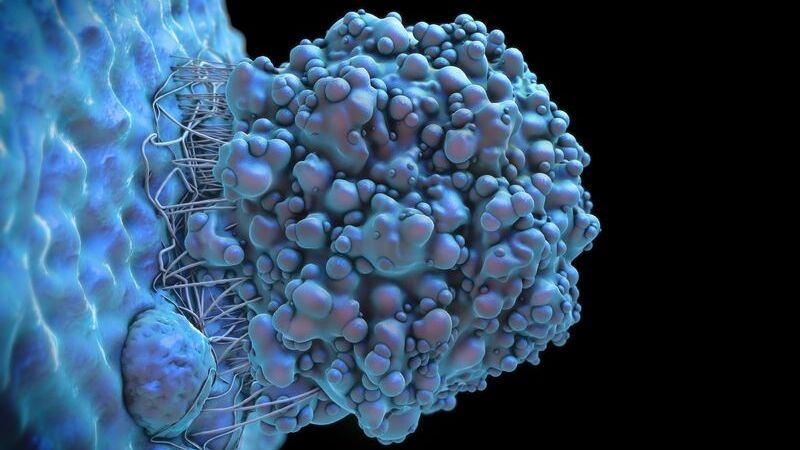“Our college and career readiness results far exceed our comparison group and the borough as a whole,” said Jon Daly, Principal at the Bronx’s Eximius College Preparatory Academy at a principals’ reception at the Harvard Club on February 7.

news, journals and articles from all over the world.

“Our college and career readiness results far exceed our comparison group and the borough as a whole,” said Jon Daly, Principal at the Bronx’s Eximius College Preparatory Academy at a principals’ reception at the Harvard Club on February 7.

Rutgers–New Brunswick’s Department of American Studies on Thursday, Feb. 20, will host the Rev. Wheeler Parker Jr., the last living witness to the abduction of Emmett Till, for a discussion on Love, Forgiveness and Reconciliation.

A Ludwig Cancer Research study has identified a mechanism by which regulatory T cells, which suppress immune responses, adapt their metabolism to thrive in the harsh microenvironment of the tumor.
Researchers found that repeats in the gene that causes Fragile X Syndrome normally regulate how and when proteins are made in neurons.
A study at The University of Texas MD Anderson Cancer Center found that chemotherapy results in increased heterogeneity within small cell lung cancer, leading to the evolution of multiple resistance mechanisms.
The highest-earning nonprofit hospitals in the United States provided less charity care to patients than lower-earning hospitals did, relative to the facilities’ respective profits, according to a new study.
Patients’ ratings of hospitals and willingness to recommend them have almost no correlation to the quality of medical care provided or to patient survival rates, according to new Cornell University research.

Shahid Aziz, a professor of oral and maxillofacial surgeon at the Rutgers School of Dental Medicine, who treats many facial trauma patients, shows how facial trauma in WWI contributed to the rise of modern plastic surgery.

Feature highlights PPPL accomplishments over the past 10 years.
New University of Kentucky research shows that the immune system may target other remote areas of the brain to improve recovery after a stroke.

A unique procedure, created by a Michigan Medicine pediatric surgeon, is repairing inguinal hernias in children using an ultrasound and a needle, with no incision needed.

By: Bill Wellock | Published: February 14, 2020 | 3:35 pm | SHARE: As an outbreak of a new coronavirus makes headlines across the world, another more common infectious disease is spreading across the United States and beyond — the flu.About 8 percent of the U.S. population gets sick from the flu each season, according to the Centers for Disease Control and Prevention.
As the government has announced proposals to ban the sale of petrol, diesel and hybrid cars by 2035 the race to electrify the motor industry is on, and motorbikes aren’t to be overlooked.
New guidelines recommend aspirin use in primary prevention for people ages 40 to 70 years old who are at higher risk of a first cardiovascular event, but not for those over 70. Yet, people over 70 are at higher risks of cardiovascular events than those under 70. As a result, health care providers are understandably confused about whether or not to prescribe aspirin for primary prevention of heart attacks or strokes, and if so, to whom.

In experiments with human cells and mice, researchers at the Johns Hopkins Kimmel Cancer Center report evidence that combining the experimental cancer medication TAK228 (also called sapanisertib) with an existing anti-cancer drug called trametinib may be more effective than either drug alone in decreasing the growth of pediatric low-grade gliomas. These cancers are the most common childhood brain cancer, accounting for up to one-third of all cases. Low grade pediatric gliomas arise in brain cells (glia) that support and nourish neurons, and current standard chemotherapies with decades-old drugs, while generally effective in lengthening life, often carry side effects or are not tolerated. Approximately 50% of children treated with traditional therapy have their tumors regrow, underscoring the need for better, targeted treatments.

Unique soils provide many beneficial values to society.
A new study suggests that for women, poor sleep could contribute to unhealthy food choices, increasing the risk of obesity and heart disease.
The ratio of special zinc isotopes in dental enamel provides information about the diet of mammals in prehistoric times
Journal of the American Heart Association report
Simple blood test could be an important new diagnostic tool for assessing suspicious ovarian growths
Nearly a quarter of parents in national poll aren’t confident in the safety of their home tap water; income disparities linked to perceptions of safe drinking water
High fish diversity is a good indicator of forest health
Several landlocked states among those with highest rates
Woeseiales-bacteria, which may be feeding on the protein remnants of dead cells. are particularly widespread in our planet’s seabed.
New machine learning study suggest the presence of at least nine gender “expressions”
Disrupting butterfly caterpillar microbiomes does not impact their survival and development
People exposed to vaccine content on social media more likely misinformed than those exposed to it on traditional media
Scientists at the MDC have discovered stem cells responsible for the most common form of kidney cancer. The team of Walter Birchmeier has found a way to block the growth of these tumors in three models of the disease. Not…
Study finds Earth’s oceans contain just the right amount of iron; adding more may not improve their ability to absorb carbon dioxide
What The Study Did: Researchers looked at the net income of nonprofit hospitals in the U.S. and examined how their financial status was associated with the level of charity care they provided in 2017 for uninsured and insured patients. To…
Chlorthalidone, the guideline-recommended diuretic for lowering blood pressure, causes more serious side effects than hydrochlorothiazide, a similarly effective diuretic, according to a new study led by researchers at Columbia University Irving Medical Center. The findings, published in JAMA Internal Medicine…
Scientists have created one of the most detailed maps of breast cancer ever achieved, revealing how genetic changes shape the physical tumour landscape, according to research funded by Cancer Research UK and published in Nature Cancer today (Monday). An international…
Researchers at Karolinska Institutet in Sweden and the University of Milan in Italy have identified a gene in human neurons that protects against the degeneration of motor neurons in the deadly diseases ALS and SMA. Gene therapy in animal models…
Use of low-dose methotrexate was tied to increased risk for skin cancer and gastrointestinal, lung and blood side effects
Embargoed news from Annals of Internal Medicine
Adhering to a gut-healthy plant-based diet over animal products may counteract unfavorable microbes known to increase heart disease risk
Merkel cell polyomavirus is implicated in a subset of Merkel cell carcinomas, in the Indian subcontinent
New artificial neural network model may serve as a basis for solving inverse problems
Researchers in the National Institute for Physiological Sciences in Japan discovered functional differences in TRPA1 which serves as a receptor for noxious heat and chemicals among mosquito species
In the recent article published in Science Bulletin , the researchers develop an effective organic-cation intercalation strategy to manipulate the interlayer coupling of layered materials, and obtain a class of organic-inorganic hybrid crystals with tailored topological properties and enhanced superconductivities.…
Scientists from Trinity College Dublin and the University of Pittsburgh have discovered that de novo genes – genes that have evolved from scratch – are both more common and more important than previously believed. Their findings appear in two studies,…
Scientists have taken a major step toward a circular carbon economy by developing a long-lasting, economical catalyst that recycles greenhouse gases into ingredients that can be used in fuel, hydrogen gas, and other chemicals. The results could be revolutionary in…
Evaluating the spatio-temporal distribution of diffusion coefficients for high-concentration Brownian particles without fluorescent labeling nor tracking them from microscopy movie data analysis based on the statistical physics
Pregnancy hypertension, or Pre-eclampsia, is a complex disorder of pregnancy. Treatment of elevated blood pressure can manage the condition in the mother, but in severe cases delivery is needed, which can present a major problem to the baby if it…
Scientists formulate a new innovation that can measure thermal energy to understand more about the processes of energy-converting systems like leaves during photosynthesis
The NSF-sponsored research could have implications in communications, medicine and other fields
Combining experiment and theory, researchers from the Max Born Institute for Nonlinear Optics and Short Pulse Spectroscopy (MBI) and the Max Planck Institute of Microstructure Physics have disentangled how laser pulses can manipulate magnetization via ultrafast transfer of electrons between…
Rice study suggests public school students have healthier core strength than home-schoolers
Products are the latest to get a push from the tobacco industry
NRG Oncology trial shows hippocampal avoidance during whole-brain radiotherapy for brain metastases reduces risks of cognitive toxicity and neurologic symptoms